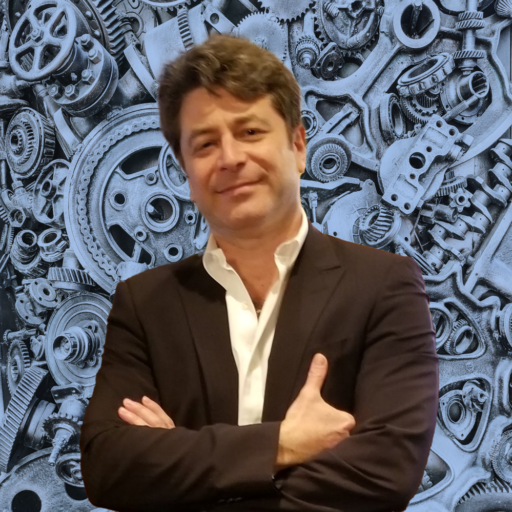Working Model: Craft New Tech for System Content

Working Model: Craft New Tech for System Content
Introduction – Working Model
Fundamental approach to “creation” is to generate something new, integration of what is available into a new entity. First, beginning with a “knowledge set”, then transition to the embodiment of the idea / design. Therefore, the Systems Engineering method is based on the development of the “Working Model” – the concept of functional capability to serve the high-level assembly need. Consequently, the method facilitates the evolution of development from the conceptual ideation to verifiable functional capabilities.
Hence, this article is going to delve into the concept of development of the Working Model related to the new system’s complexity.
Definition of the Working Model
The following outlines the concept of “Working Model”:
- Firstly, the descriptive comprehension of the total assembly and systems’ functions
- Sequentially, developed into the Feature and Systems’ requirement sets
- Consequently, integrated into the analytical (included into the requirements) and simulation models (existing and new virtual)
- Based on the hypothetical total capability to function
- Followed by the development of parameters and conditions in which the positive functionality is true
- Also, followed by the engineering analysis exploring all potential failure modes related to the function (s), interfaces and working conditions
Fundamentally, the “hypothetical Working Model” is a system level analytical and virtual simulation, which is functional regardless to the specific technology and conditions. Therefore, it’s primary purpose is to outline the rolled down requirements, which will help to determine the necessary means (hardware and software) for the high-level function execution.
Inclusion of the Prerequisites
Generally, the Working Model will need to include the available information sets – prerequisites. (See the reference.) Such as:
- Fundamentally, Usecases related to the Vehicle and human behaviors and interactions – related to the intended functionality
- Followed by the Power availability concept for the specific applications – for relevant Usecases
- Including, customized Field of View for the intended applications
- Accounting for all necessary anthropometric Classification Standards for the Passive Occupant Safety
- In addition, encompassing General Environmental and General vehicle durability information
- Other available information sets
Consequently, if the necessary knowledge set is yet to be developed, it has to be comprehended for the scope of work related to the specific application / Vehicle Variant
Application of the Development Cycles of Scoping and Planning
Overall, from the beginning of constructing conceptual Working Model for a specific Vehicle Function and throughout the whole development cycle, the process is an evolution of learning, developing, verifying and implementing. Furthermore, in case the virtual simulation is available, and it is based on the specific sensing capabilities, it is possible to run the model through the range of conditions in order to determine the given capabilities and compare them to the necessary minimum requirements.
Moreover, the result will challenge the initially chosen technology and help, either to improve it or compare to the alternatives and make a different choice for the execution early. In addition, the technology is being developed and challenged based on the high-level requirements, not on its limitations.
Therefore, the clear set of system’s requirements and expectations (capability margins) will dictate the subsystem content and roll down of specific requirements for the hardware and logic.
Developing the Simulation Capabilities: Employment of Virtualization and AI
See the references.
Fundamentally, the main reason for developing the simulation capabilities for the Working Model is for the simulation to be capable of decision making within the same time or faster than in real life / traffic conditions.
Conclusion: Working Model - Proposal Development
In conclusion, the Working Model is conceptual approach for the Systems Engineering method to evolve from the concept to production integrating the principles, knowledge sets, tools, all available means for creation of the successful functional capabilities intended for the Vehicle Content.
Consequently, the Working Model allows the initial development followed by the comprehensive productionizing of the technology set, while capable of verifying the design intended capabilities utilizing the simulation tools.
References:
Development of System Content: https://georgedallen.com/develop-new-system-content-proposal-craft-advanced-tech/
Field of View: https://georgedallen.com/new-field-of-view-development-of-the-prerequisites/
Calibration and Scalability: https://georgedallen.com/new-field-of-view-development-of-the-prerequisites-2/
Development of Databases for the Usecases: https://georgedallen.com/usecases-development-of-the-prerequisites-new-databases/
Classification Standards: https://georgedallen.com/crafting-classification-stratification-new-passive-safety-tech/
Virtual Development: https://georgedallen.com/virtual-development-embracing-tomorrow-today/
“Virtualization” definition: https://en.wikipedia.org/wiki/Virtualization
About George D. Allen Consulting:
George D. Allen Consulting is a pioneering force in driving engineering excellence and innovation within the automotive industry. Led by George D. Allen, a seasoned engineering specialist with an illustrious background in occupant safety and systems development, the company is committed to revolutionizing engineering practices for businesses on the cusp of automotive technology. With a proven track record, tailored solutions, and an unwavering commitment to staying ahead of industry trends, George D. Allen Consulting partners with organizations to create a safer, smarter, and more innovative future. For more information, visit www.GeorgeDAllen.com.
Contact:
Website: www.GeorgeDAllen.com
Email: inquiry@GeorgeDAllen.com
Phone: 248-509-4188
Unlock your engineering potential today. Connect with us for a consultation.

